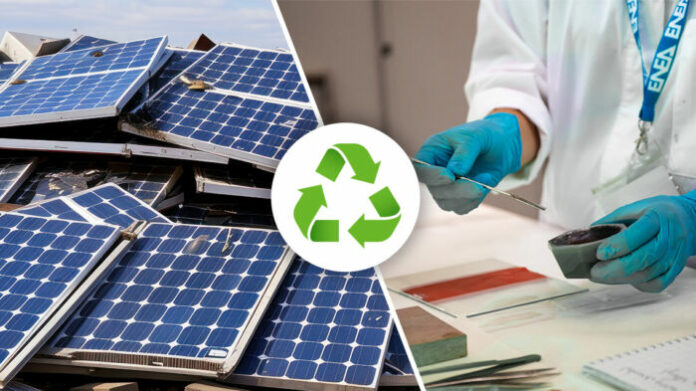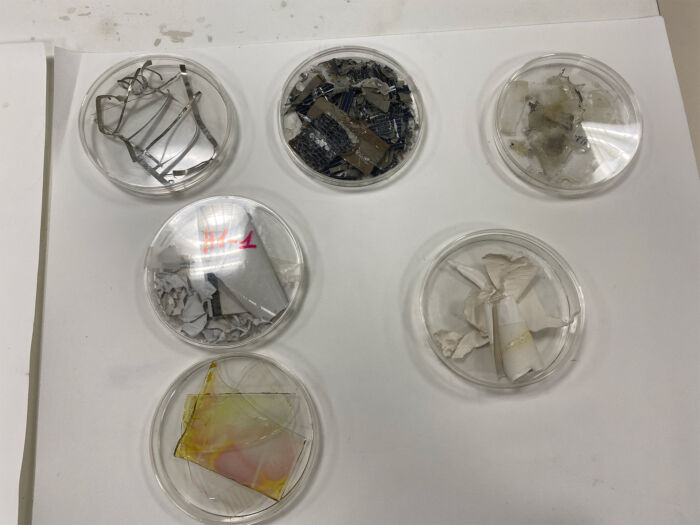
Patents, innovative solutions and methodologies to maximize the recovery and valorization of materials in end-of-life photovoltaic panels and make them available to industry. These are some of ENEA’s achievements in the area of recovery of materials, including critical materials, from decommissioned photovoltaic panels, for the sustainable supply of raw materials with high added value for industry, in line with the principles of technological innovation and circular economy.
Specifically, ENEA researchers from the Sustainability Department are working on several fronts with the goal of recovering critical (such as silicon and aluminum), but also strategic (copper) and non-critical (glass, silver, and polymeric components) materials. The innovations were presented at the workshop “Recovery & recycling from PV panels” organized by ENEA as part of the 7th edition of the Symposium on Circular Economy and Urban Mining (SUM 2024).
Among the novelties at the center of the event were the results of the ReSiELP project, funded by the EIT RawMaterials KIC, with the design of a panel heat treatment plant, the development of systems to treat the liquid and gaseous wastes resulting from heat treatment, and also the evaluation of the environmental and economic performance of the entire recycling process using Life Cycle Analysis (LCA) and Life Cycle Cost (LCC) methodologies.
But that’s not all. As part of the IEMAP project, funded by MASE (2022-2024) under the “Mission Innovation” initiative, ENEA is developing an innovative process, based on a patent, that allows the recovery of the main components of photovoltaic panels, such as glass, cells, electrical contacts, and plastic components, thanks to an infrared treatment that allows the thermal degradation of the plastic material layer and avoids combustion, typical of other methods, with benefits in terms of reduced emissions into the atmosphere.
ENEA also has patented an environmentally friendly process for recovering silicon from end-of-life photovoltaic panels and turning it into an innovative nanomaterial useful for the development of cheaper, higher-performance and longer-lasting batteries. The patent can be used in plants recycling decommissioned photovoltaic panels and in photovoltaic panel manufacturing plants themselves, for example, to recover silicon from defective panels.
Acting along the same lines is the PARSIVAL project, funded by KIC EIT Raw Materials, under which researchers are developing technological solutions for processing recovered silicon cells to produce lithium-ion battery anodes with higher energy density than commercial ones.

All silicon recovery activities and other components constituting the photovoltaic module are conducted in collaboration and synergy with the ENEA Department of Energy Technologies and Renewable Sources, where next-generation cells, modules and batteries are studied, designed and manufactured, thus representing a virtuous example of closing the entire value chain and life cycle.
“The growth of photovoltaic waste globally requires special attention to the panel end-of-life sector,” comments Marco Tammaro, head of the ENEA Laboratory of Technologies for Reuse, Recycling, Recovery and Valorization of Waste and Materials. “In this context, research and innovation can play a crucial role in reducing problems related to resource scarcity and reducing imports from abroad, at lower costs than primary raw materials.”
“The development of high-value recycling solutions in the context of end-of-life management will enable a virtuous closure of the life cycle of these devices,” says Maria Lucia Protopapa, of the Functional Materials and Technologies for Sustainable Applications Laboratory, ENEA Research Center in Brindisi. “In this way, recovered materials and components can be re-introduced into a new production cycle, with benefits in terms of energy, economic and environmental savings.”
According to estimates, the world’s installed photovoltaic power has been increasing exponentially reaching 1,047 GW at the end of 2022 with an upward trend that is expected to reach the threshold of 18,200 GW by 2050, when the panels to be disposed of may be on the order of 78 million tons.



































